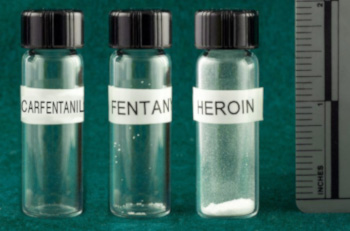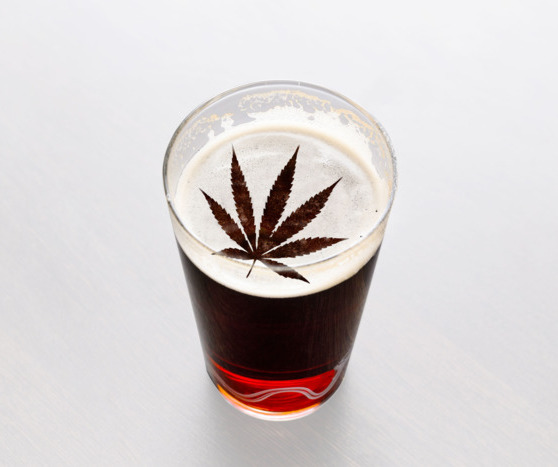Blog
GUEST VOICES: California Alcohol Policy Alliance 3rd Annual Summit Wrapup
Public Health and Safety Advocates From Across California Gathered to Recognize that We Are "Better Together"
by Sara Cooley Broschart, MPH, Advocacy Manager Emeritus, California Alcohol Policy Alliance
 Over one hundred attendees from 13 counties gathered Thursday, October 11, at The California Endowment’s Center for Healthy Communities in Los Angeles to celebrate the California Alcohol Policy Alliance (CAPA)'s legislative successes of 2018—and strengthen their relationships and skills for 2019. Many were already members of CAPA, though new faces were spotted and welcomed. After all, the theme of the conference was "Better Together," and all shared the common goal of collaborating to stop the rising alcohol harm in California.
Over one hundred attendees from 13 counties gathered Thursday, October 11, at The California Endowment’s Center for Healthy Communities in Los Angeles to celebrate the California Alcohol Policy Alliance (CAPA)'s legislative successes of 2018—and strengthen their relationships and skills for 2019. Many were already members of CAPA, though new faces were spotted and welcomed. After all, the theme of the conference was "Better Together," and all shared the common goal of collaborating to stop the rising alcohol harm in California.
GUEST VOICES: Small Steps in Opioid Epidemic
2018 opioid legislation on right track, but CA still miles short of real care.
 Ramon Castellblanch, Ph.D., President, Quality Healthcare Concepts, Inc.
Ramon Castellblanch, Ph.D., President, Quality Healthcare Concepts, Inc.
This year, the California legislature and governor took small steps toward alleviating the opioid epidemic that is plaguing our state. Action on the epidemic is desperately needed. In the past three years, more Californians have died of opioid overdoses than were killed in the Viet Nam war and the  death rate could still be rising. In 2016, roughly 350,000 Californians abused and/or were dependent on opioids, putting them at high risk of a fatal overdose. These latter Californians are said to suffer from opioid use disorder (OUD).
death rate could still be rising. In 2016, roughly 350,000 Californians abused and/or were dependent on opioids, putting them at high risk of a fatal overdose. These latter Californians are said to suffer from opioid use disorder (OUD).
GUEST VOICES: Gov's Hesitation Hastens Death Toll
 by Ramon Castellblanch, PhD
by Ramon Castellblanch, PhD
Quality Healthcare Concepts, Inc.
UPDATE 9/26: The Governnor has vetoed SB 2384, which would require that private insurers pay for opioid addiction treatment services. AJ supported SB 2384. In his last turn at signing bills, Governor Jerry Brown could take some big steps in saving California lives from the opioid epidemic; but, so far, he hasn’t done so. As he hesitates, the death toll gets higher. His deadline is September 30.
In his last turn at signing bills, Governor Jerry Brown could take some big steps in saving California lives from the opioid epidemic; but, so far, he hasn’t done so. As he hesitates, the death toll gets higher. His deadline is September 30.
The number of opioid overdose deaths in the United States is still rising. In fact, the rate at which those deaths is going up has actually increased in the past few years. Deaths due to the synthetic opioid fentanyl, 80-100 times stronger than morphine, are driving this soaring death toll. Deaths due to fentanyl are rising in California, too. At this point, the top priority in fighting the opioid epidemic is funding recovery and treatment for opioid use disorder.
The Legislature has put a dozen or so bills on Brown’s desk that are aimed at fighting California’s opioid epidemic. Some could substantially increase funding for recovery and treatment for opioid use disorder while otherrs would not. Guess which bills Brown’s signed so far.
Still sitting on his desk are all the bills that would increase funding for recovery and treatment for opioid use disorder. SB 275, supported by the California Society of Addiction Medicine, would require that substance use disorder (SUD) treatment services for adolescents be provided by competent and adequate staff. SB 823, supported by American Society of Addiction Medicine (ASAM), would require SUD treatment for adults meet ASAM’s outcome-oriented and results-based standards. SB 992 would provide more state oversight of recovery and treatment facilities. Finally, SB 212 would require the pharmaceutical industry to run a statewide drug and sharps take-back program. This would help get dangerous opioids out of medicine chests and into safe disposal. All of these bills could save many Californians’ lives.
It’s good that the Governor has signed all the opioid legislation that doesn’t increase funding for recovery and treatment for opioid use disorder; but he’s got to back up these bills with serious funding. It’s time for him to show he’s really serious about reducing California’s opioid death rate and saving lives. Next week is his last chance.
GUEST VOICES: Here Come “Low Energy Drinks”
 Building a Wall Between Cannabis and Alcohol
Building a Wall Between Cannabis and Alcohol
by Bruce Lee Livingston, MPP
Executive Director/CEO, Alcohol Justice
Alcohol and marijuana just don’t mix. Alcohol has some stimulating properties at low dosages, but ultimately it is a sedative. Marijuana and most cannabis products are sedating. When a teen tries both together, the result is much drowsier, much tipsier teen.
 Take driving for example. Most countries already limit blood alcohol content (BAC) to .03% or .05%. Utah is the first state to lower the BAC limit to .05%, and Canadian provinces are moving that direction. In California and every other state the BAC limit is .08%. Some studies have shown driving while high on marijuana might actually be slightly safer than driving while drug-free, but most studies indicate increased risk from cannabis. Importantly, there is overwhelming evidence that combining the two leads to more impairment and reckless driving than either alone. Even at BACs below .08%, driving occurs when the influence of cannabis is added.
Take driving for example. Most countries already limit blood alcohol content (BAC) to .03% or .05%. Utah is the first state to lower the BAC limit to .05%, and Canadian provinces are moving that direction. In California and every other state the BAC limit is .08%. Some studies have shown driving while high on marijuana might actually be slightly safer than driving while drug-free, but most studies indicate increased risk from cannabis. Importantly, there is overwhelming evidence that combining the two leads to more impairment and reckless driving than either alone. Even at BACs below .08%, driving occurs when the influence of cannabis is added.
More Articles ...
Help us hold Big Alcohol accountable for the harm its products cause.
| GET ACTION ALERTS AND eNEWS |
STAY CONNECTED    |
CONTACT US 24 Belvedere St. San Rafael, CA 94901 415-456-5692 |
SUPPORT US Terms of Service & Privacy Policy |


